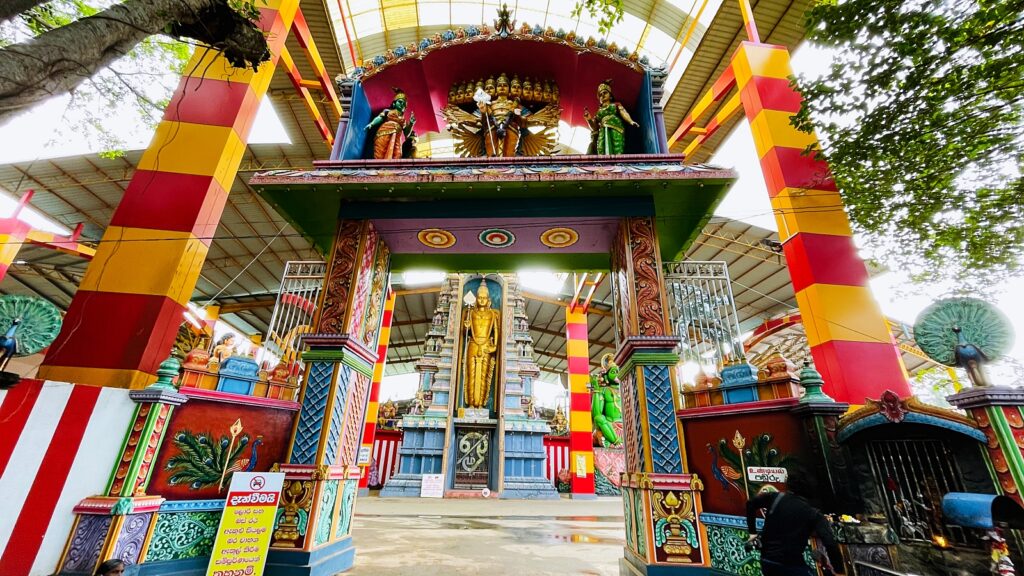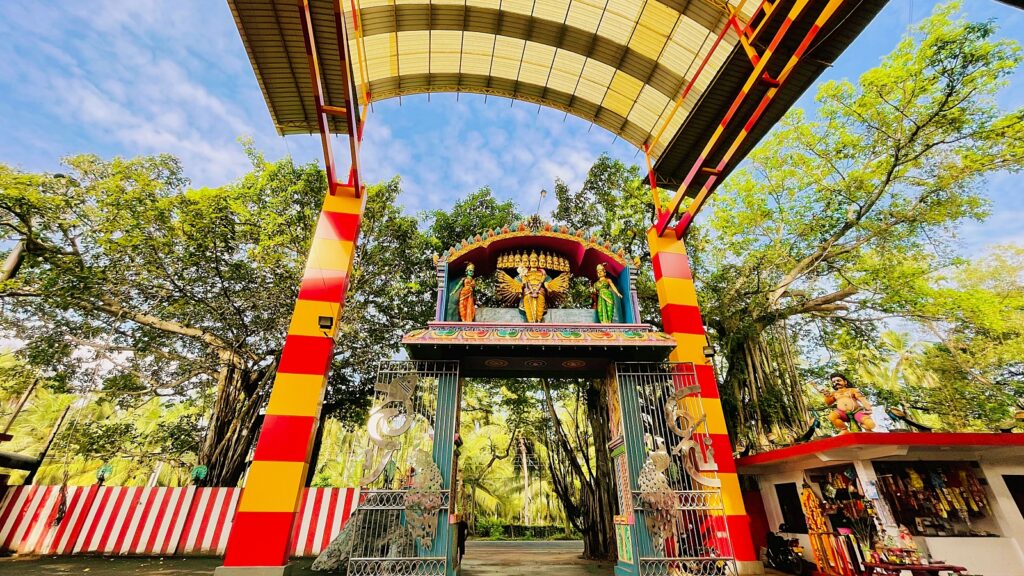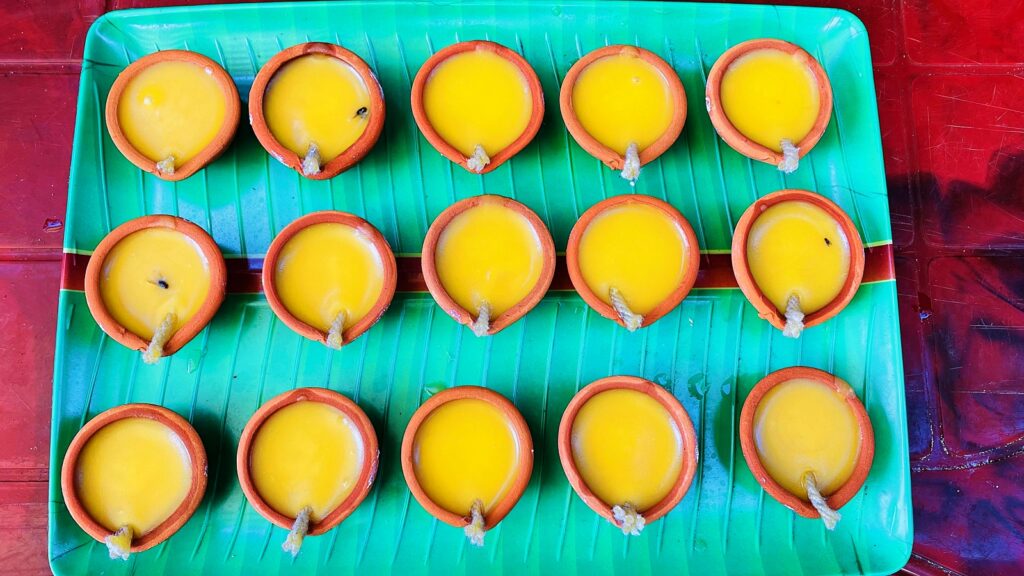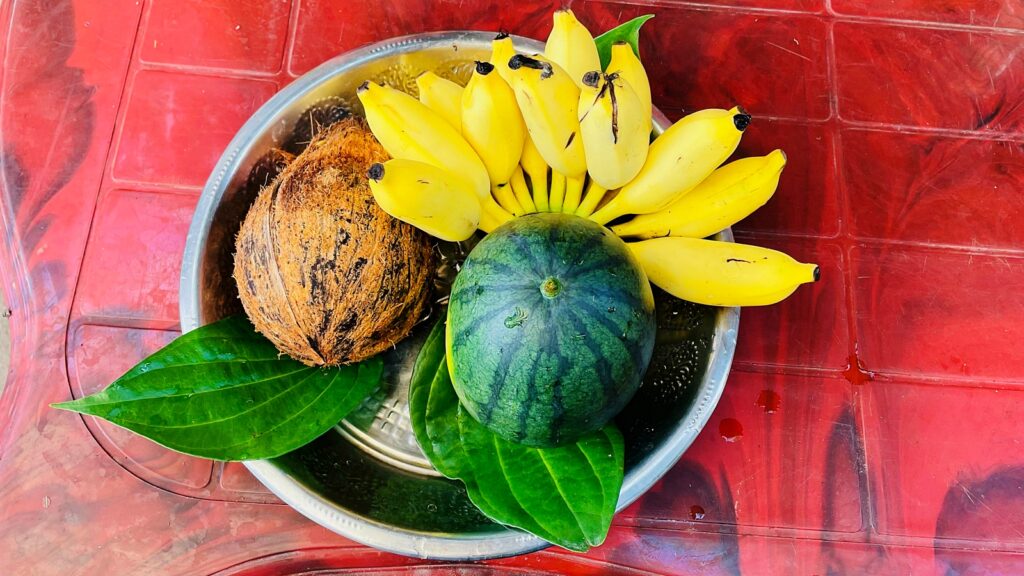Punchi Kataragama Murugan Temple in Sri Lanka
Ninety minutes of a lovely road journey through Sri Lanka’s palm-fringed highways led us to the replica of a Murugan Temple, which we couldn’t help but notice due to its vibrant architecture as we travelled from Colombo to Jaffna. This resounding Hindu Tamil temple of Punchi Kataragama was built by a local toddy businessman and landowner in Madampe in Halavata (Chilaw), close to the Madampe LDR Prawn Farm and on the main route A3. In January 2012, the replica of Kataragama temple dedicated to Lord Murugan was inaugurated.
This Murugan temple, with its contemporary Dravidian style architecture, lends grandeur to Madampe, a small village in Puttalam District. Since Madampe is located in Sri Lanka’s primary region for coconut cultivation, the road that leads to this magnificent temple is bordered on either side by coconut trees. We decided to take a brief halt at this Hindu Kovil because the enormous statues that peered out at us from behind the gigantic main gate captured our attention. I discovered that this temple is known as Punchi Kataragama temple and also goes by the name Replica of Kataragama temple. Kataragama is the name of the South Indian god Murugan in Sri Lanka.
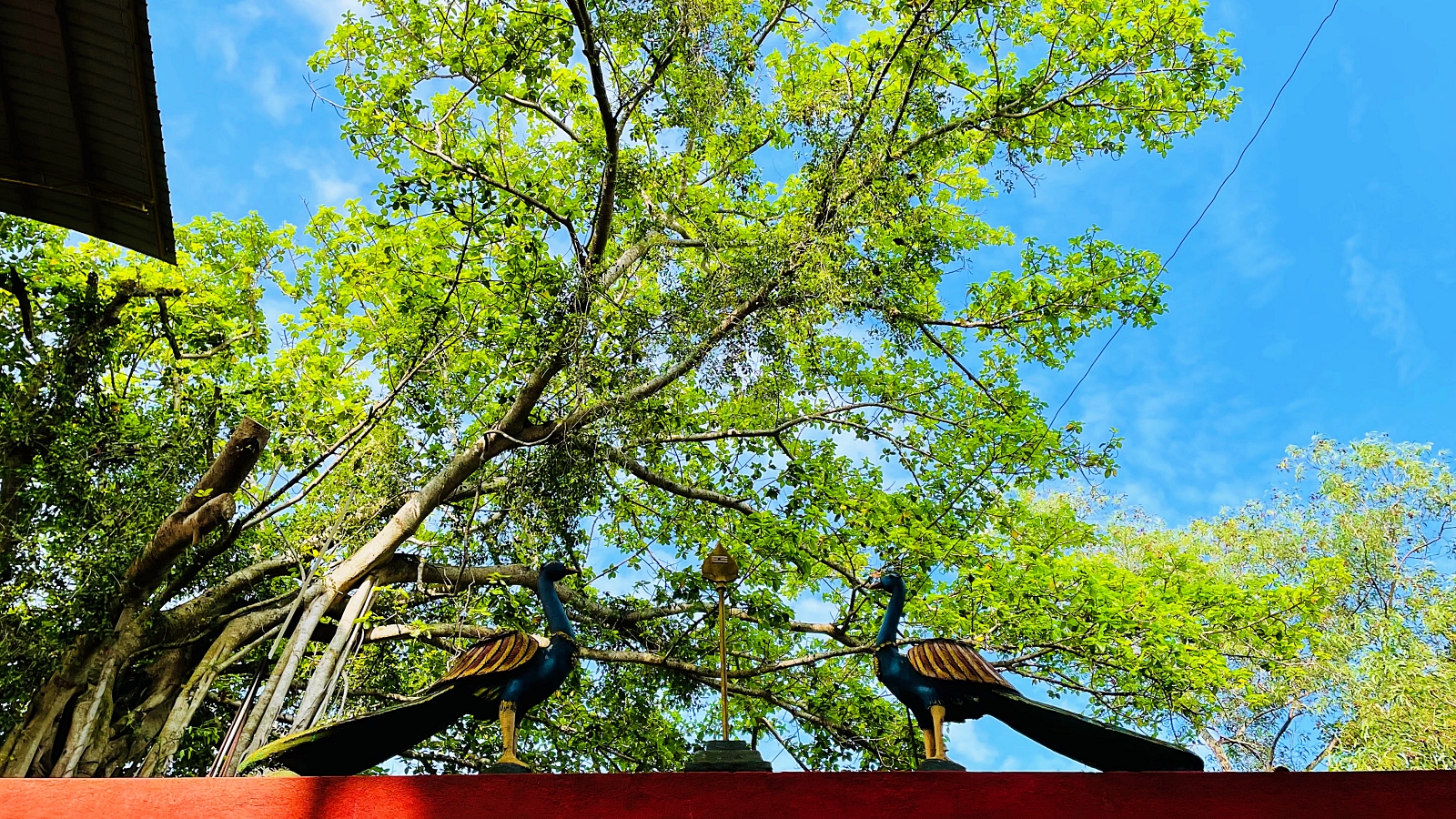
The main entrance gate’s mural of a goddess with ten heads and numerous hands, which is quite reminiscent of a fresco of Ravana, amused me. It is located at the top of the gate. Two additional goddesses who I assume to be the avatars of the same goddess as the one in the centre of the figure are supporting it on the side. There is a small temple located beneath a tree right at the entrance to this stunning temple where worshippers can make offerings. Huge statues are in front of you as you cross the main gate, and a second, smaller temple with maroon tiles is to your left.
The temple was getting ready for its daily puja on the day and time I visited, and for one of the offerings, a banana leaf-style tray contained 15 ghee Diyas that were bursting with hard clarified butter and Diya Batti. Plates piled high with a coconut, a dozen bananas, a watermelon, and two betel leaves served as the additional offerings.
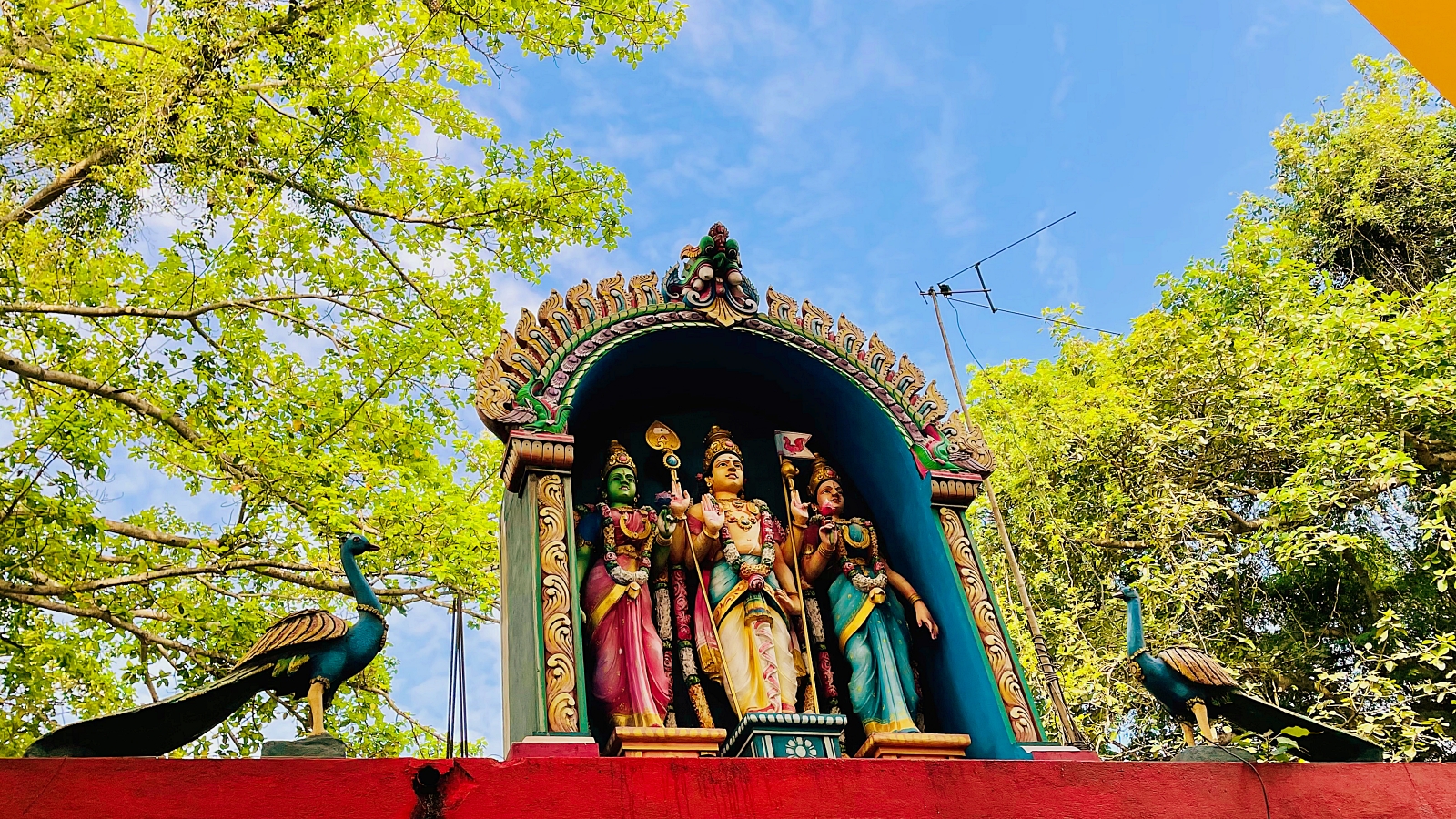
Vishnu and his two wives, Sridevi and Bhudevi, are depicted on the temple’s roof in an arching pattern. On either side of this arch, there are two beautiful peacock statues. While Sridevi is the goddess of immaterial wealth and Bhu-Devi is the goddess of material wealth, Saraswati and Lakshmi, the former of whom is moksha-Patni, or offering intellectual pleasures, and the latter of whom is Bhoga-Patni, or offering material pleasures, are the respective deities in some temples.
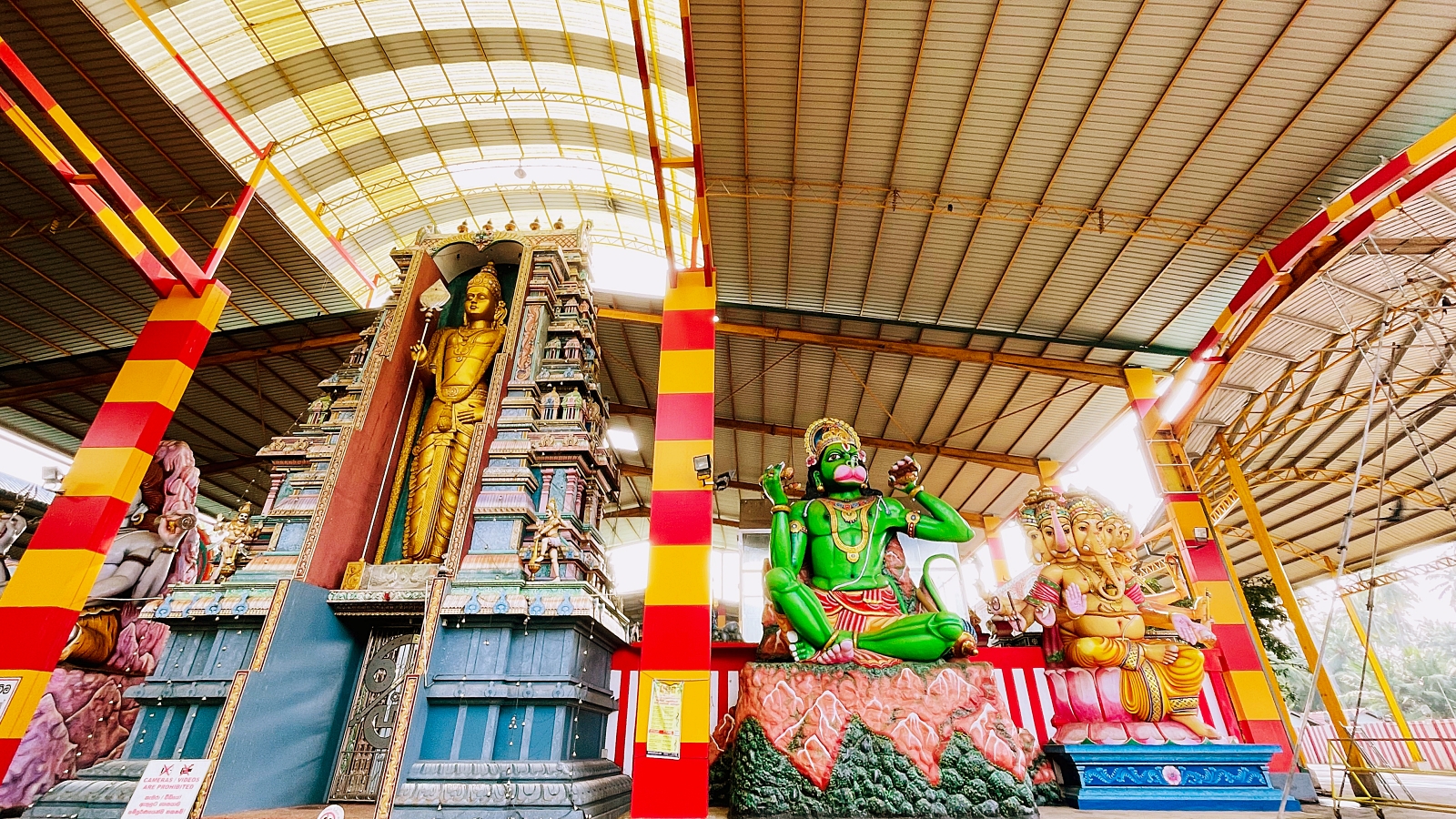
The large statue of Murugan is the focal point of the temple’s principal statues, which also include enormous statues of Shiva in a light blue colour, Hanuman in a vivid green and a Ganesh statue with many heads. In this Kovil, peacock statues are everywhere, mostly in the upper part of the smaller temples. The side design is reminiscent of a Tamil Kovil, with several statues clinging to the pyramidal shape. You are welcome to visit the temple and participate in its daily Puja, however, taking pictures within the main temple is not permitted. You can only enter with a longing for faith and admiration for the wonders of architecture.
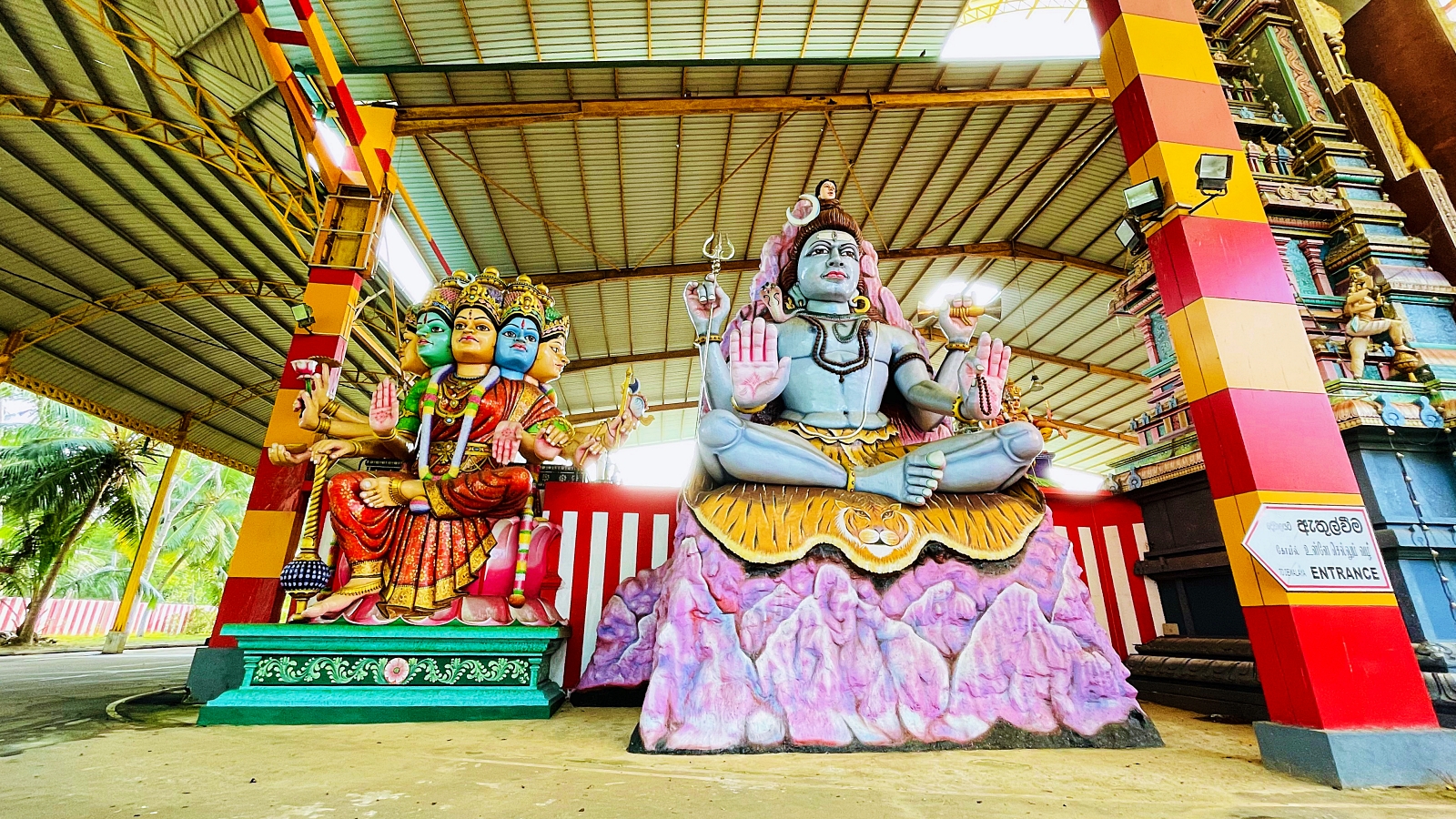
This Kovil is a well-known sight to see on the Ramayana trail because, although being a replica of a Murugan temple, devotees visit it with the same faith they would visit the original temple. Besides, the architecture is stunning to look at. A historic Hindu temple, a Buddhist temple, and a Roman Catholic church honouring St. Sebastian are also located in Madampe. The Corea House, the historic private residence of the Corea and Seneviratne family, who have been the estate’s proprietors since the mid-18th century on behalf of the Kandyan kings, is a well-known historical landmark of the town.

